Fashion catalog management is a pain. Find out how to use AI to reduce tedious work so you can focus on your creative duties!
by YesPlz.AIJuly 2025

Operating a fashion eCommerce? Whether you are a beginner or not, all e-commerce store managers face a common problem: juggling a million tasks every single day.
The problem with repetitive work, such as tagging and SEO, is that it takes away so much of your time. What normally happens is you set aside other tasks that are equally necessary, but more impactful.
What if an AI can offload several of these catalog management tasks?
Yes, AI is the solution you are waiting for! But how does it help, and what do you have to gain?
Key Takeaways
Fashion AI can help you significantly free up some time
Fashion AI can increase your conversion rate, average order value, and customer satisfaction
Fashion AI can help you standardize your taxonomy, or classification of fashion, for consistency
It should not come as a surprise that everybody is talking about AI. Although AI cannot solve everything, it makes sense to use it so you can keep up with the changing times.
By the end of this article, you will find yourself armed with new and useful information, which will help you decide whether or not AI belongs in your fashion business!
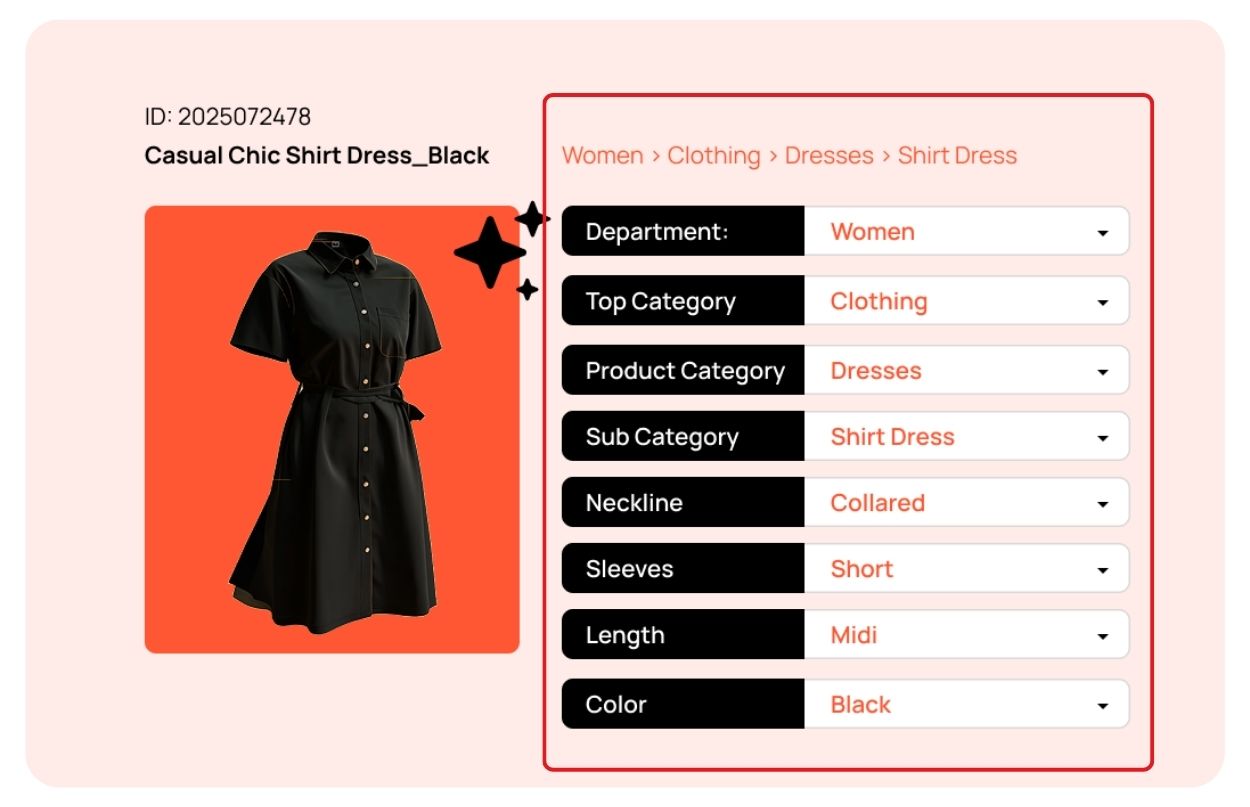
Category trees in your e-commerce store are like shelves in a physical store. They contain the same “type” of product, making it easier for a shopper to browse items.
The challenge here is the manual work—we are talking about dozens or even hundreds of hours—it takes to create an organized category system. Just imagine this—you need to create a category for:
Gender (Women, Men, Kids, Baby)
Product type (Tops, Pants, Dresses, Shoes, Bags, Jewelry, etc)
Sub-product type (Tops: Blouses, Shirts, T-Shirts, Graphic Tees etc)
And more
In addition to that, the person in charge of this task has to view each product, tag each product to a certain category, and then do the same process for the next products.
What if you have 50,000 fashion products in your catalog?
An AI understands retail product taxonomy, and it has the power to create a fashion category tree on its own.
The AI can:
Recognize an image and categorize it (gender, age, product type)
Create fashion product category trees (Women > Clothing > Dresses.)
Identify the product details (Shirt Dresses, Sun Dresses, Maxi Dresses, etc.)
The AI can take on the bulk of the work in manual tagging, freeing up your time for creative work. Once the AI does this, you can check the results, make the categories visible, and voila! You are done with this task!
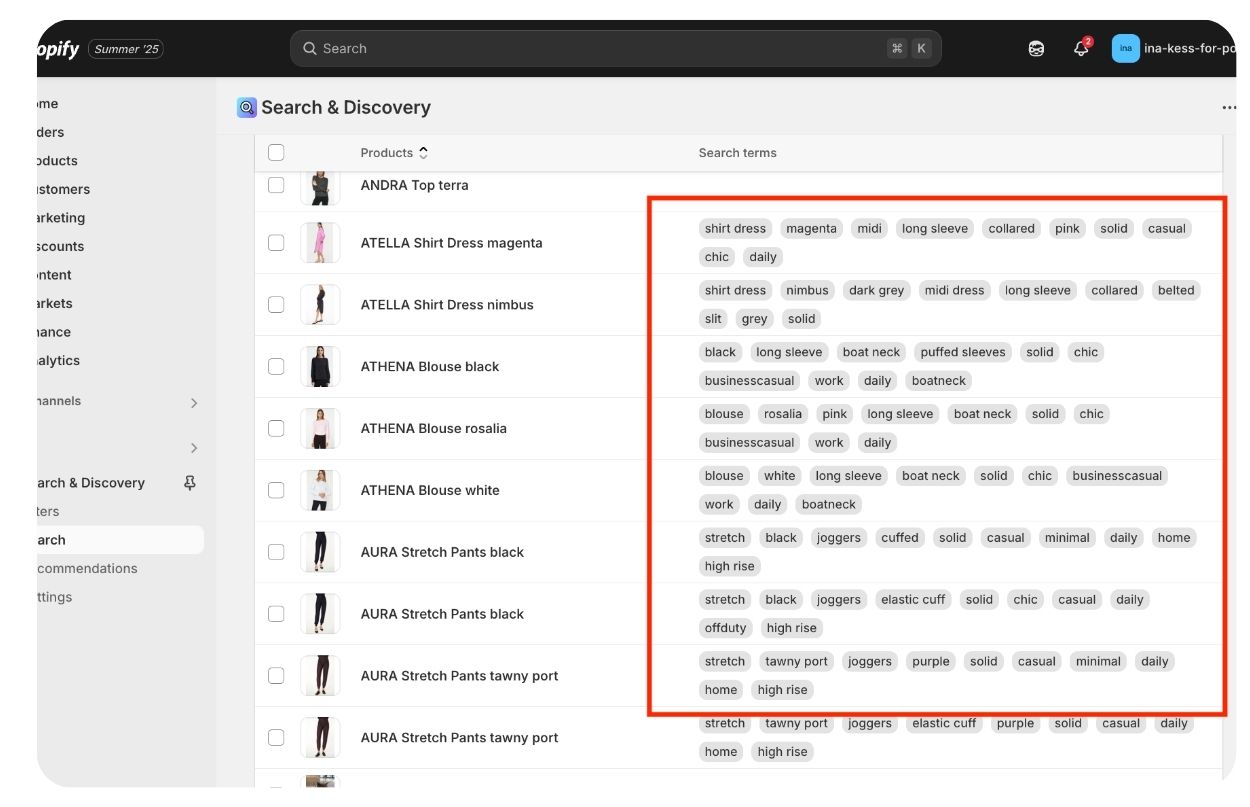
Tags are descriptive keywords that enable an eCommerce system to identify what a product is about. The tag is used for search, filtering, and personalization.
The more relevant tags there are, the better it is for search results, not only within the store but also in search engines.
This is manual work, and a task like this impedes your effectiveness. Sure, you are productive, but you are not using your time wisely. Like the previous challenge, you can spend dozens of hours tagging each product manually for this purpose.
Here is another problem: you tagged a dress as a “tube top dress,” but some shoppers might search for “off the shoulder dress” or “sleeveless dress” in their search.
In this case, your product will not appear in the search results.
AI can generate SEO-friendly tags, and you do not even have to add these tags yourself. The AI can:
Create up to 15 attributes (tags) for each product
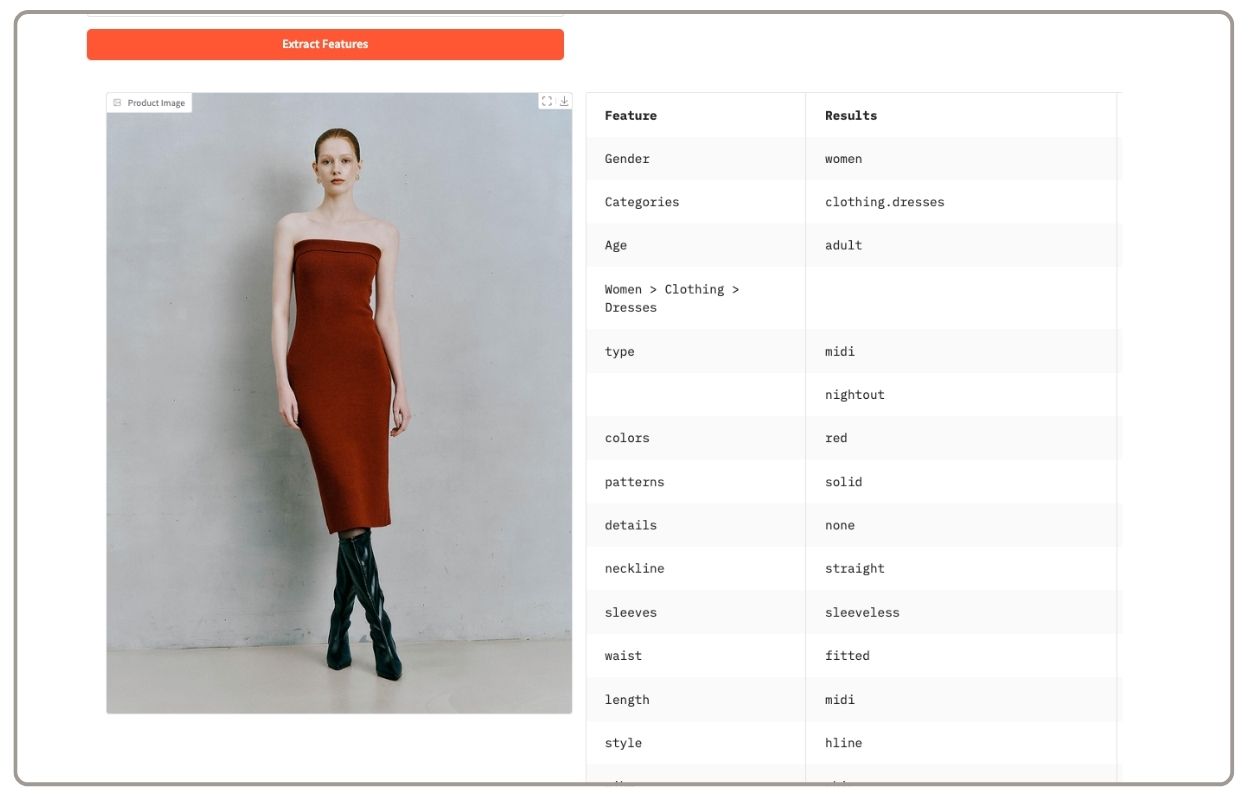
Women > Clothing > Dresses
Midi Length
Red
Solid Pattern
Form-fitted waist
Sleeveless
Cocktail party
Straight neckline
Strapless, body con, rust color, knit
What benefit does this offer? Appropriately tagged products can:
Show relevant products to a user (from search and filter)
Increase catalog awareness
Improve conversion rate
Increase average order value
Essentially, the AI boosts your product discovery. It is not only the business that benefits from this—you also do. Since the AI does all this, you no longer have to spend late nights manually tagging each product.

It is not only the product type you need to tag, nor the color. There is value in tagging products by occasion and style because shoppers search for clothes this way.
For example, a shopper may want to shop by:
Party
Date Nite
Workout
Wedding
Work
Outdoor
A fashion store with these categories, search, and filter options can sell more than those that don’t. There are challenges you will face to make this happen, such as time, standardization, and repetitive work (especially for new buzzwords or fashion taxonomy).
What if there is a fashion AI that can do all of it?
An AI built specifically for the fashion industry can auto-categorize products. This catalog automation process happens in several ways, such as:
The AI “thinks” of new categories based on social occasions
The AI goes through your product catalog
The AI tags each product as to where it belongs
It is not only the workload that the AI reduces, but it also standardizes the tagging and occasion labels or filters, making your store maintain a level of consistency.
The result?
Shoppers who come to your website will see options for these occasions. The biggest benefit is that they can easily shop based on their preferred styles. Research suggests that shoppers are more likely to come back to the same store where they can shop by clothing style.
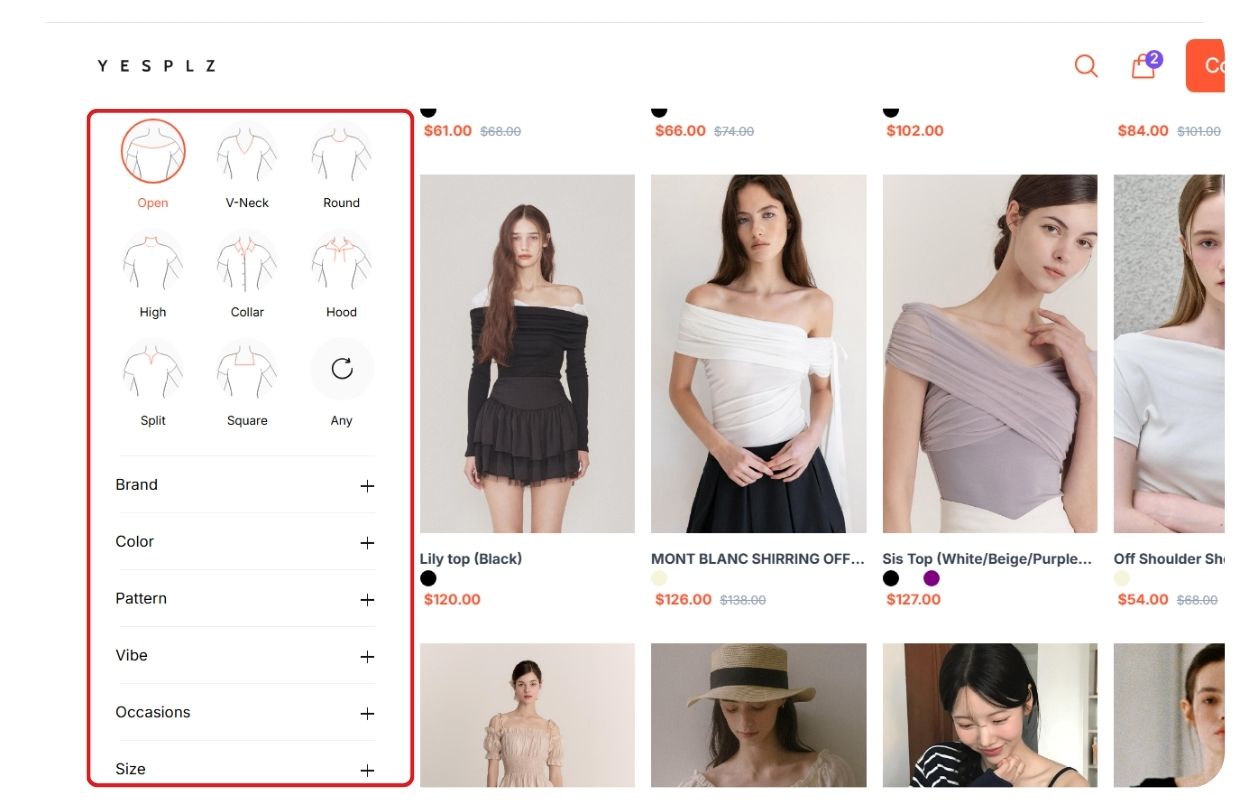
Filters are those boxes that consumers check to drill down to the product type they are looking for. Consumers like this feature because:
They can search for clothes the way they want
They do not have to scroll through “random” products
They can easily check if what they are looking for is available
Filters improve customer experience, but they are only as good as your imagination allows. Without AI, your filtering options are limited. But with AI, your store can offer dynamic filtering options, allowing shoppers to shop and browse the way they want.
Fashion AI can create tags for each product. In turn, the filter function can use these tags, making it possible to offer dynamic filtering options to your shoppers.
The AI will analyze product images and tag key fashion attributes:
Design (neckline, sleeves, fit type, length, etc.)
Color
Pattern
Fabric likeness (velvet-like, leather-like, denim-like)
Vibe (romantic, minimal, chic, etc.)
Occasion (work, gym, home, night out, etc.)
There is little to no need for manual creation of the filters, much less for selecting which products belong to specific filters. The AI does all of this.
You, the store manager, now only have to review the filters that the AI made and choose which ones you want to display in the store!
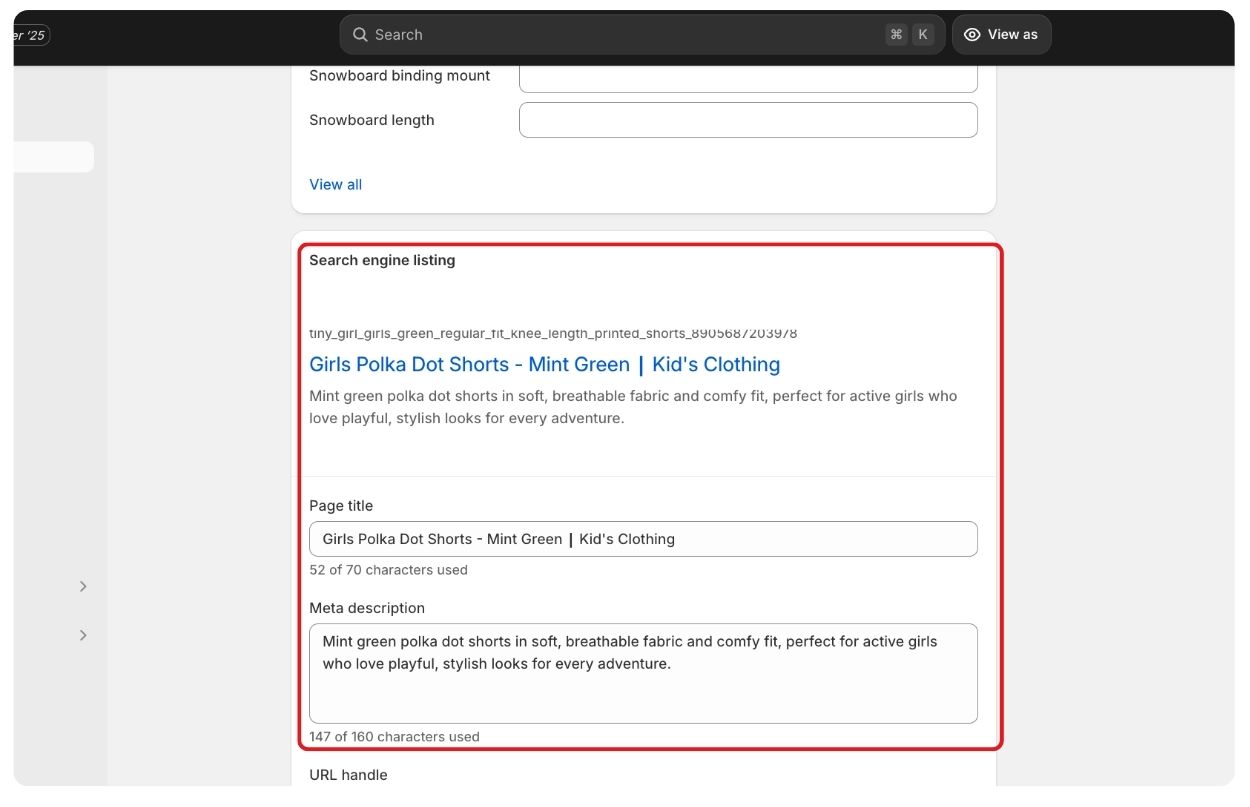
Like it or not, all these tagging and filtering activities can take up so much of your time. As a result, search engine optimization, a very important component of online marketing and organic growth, will eventually take a back seat.
Even if you have the time to do SEO, just imagine the opportunities you miss. There is no way you can add all relevant keywords to a product. In addition, search behavior is now changing.
AI can suggest keywords that you may not have thought of. How is this possible? AI browses thousands of products every day—this is how AI understands goings-on in the fashion industry.
As a result, the AI can do the following things for you:
Generate search-optimized meta-titles and meta-descriptions from the product images
Use your product images to come up with keywords
Write SEO-rich product descriptions
There are several benefits to using AI for keyword optimization. Here are the most important ones:
Your products appear on the first page of search instead of your competitors’
People who shop in CHatGPT or other LLMs will see your products
You can leverage the power of fashion AI because it understands what your products are. And because it does, your products will have better chances of appearing not only on traditional search engines but in AI search engines, too.
Yes, AI can make a product catalog that has a standard fashion product taxonomy, update it, and revise it regularly.
Yes, in the sense that the AI will tag all products based on the product image and characteristics. The AI can also assign products to their respective categories.
AI is useful in reducing repetitive work, standardizing for consistency, and keeping up with fashion retail taxonomy.
Yes, AI can help create meta-titles, meta-descriptions, and product descriptions that contain e-commerce taxonomy for search engine optimization.
AI can do wonders for your fashion business. With AI, you not only improve business processes and results, but you also get to keep your sanity.
So, what is the recommended step from here? You have seen what AI can do; now it is time to see a live demo. Contact us now—schedule a call and see how AI can streamline things for you!

Written by YesPlz.AI
We build the next gen visual search & recommendation for online fashion retailers
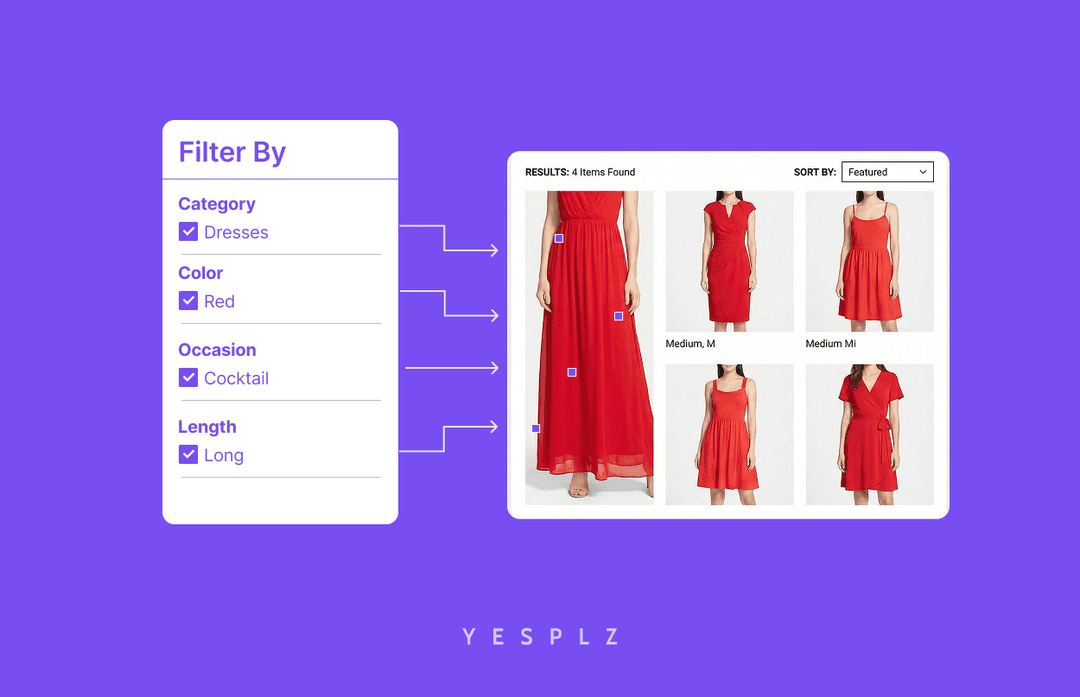
Stop losing sales to poor product filtering. Discover how AI simplifies creating Shopify filters, saving you 25-50 hours per 100 products.
by YesPlz.AI
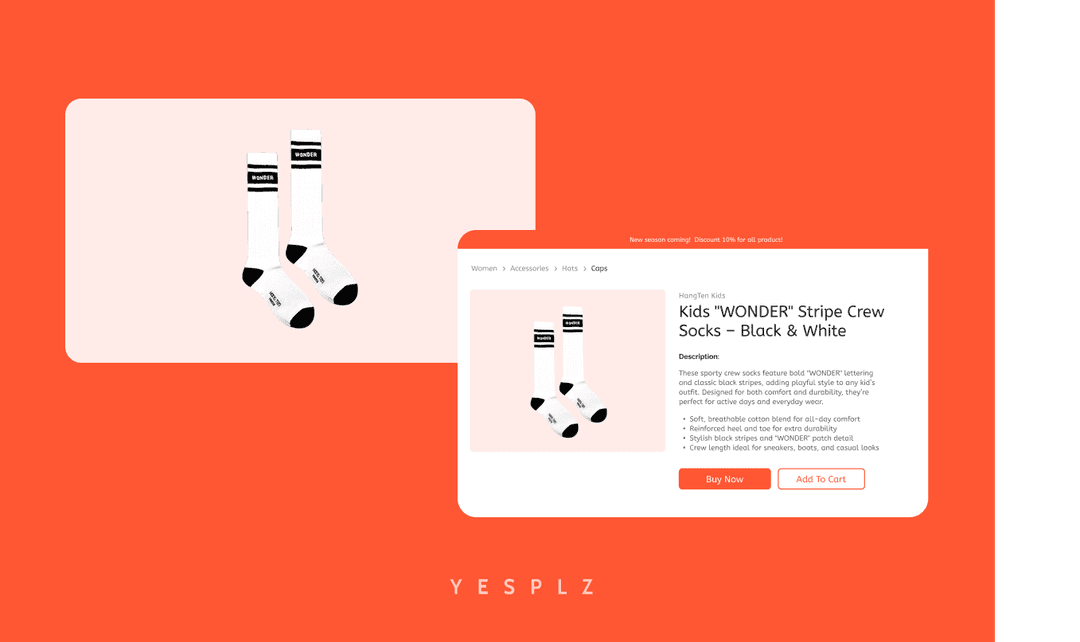
Automate Shopify product pages and cut 50–100 hours of manual work. AI generates product titles, descriptions, and metadata instantly from product images.
by YesPlz.AI